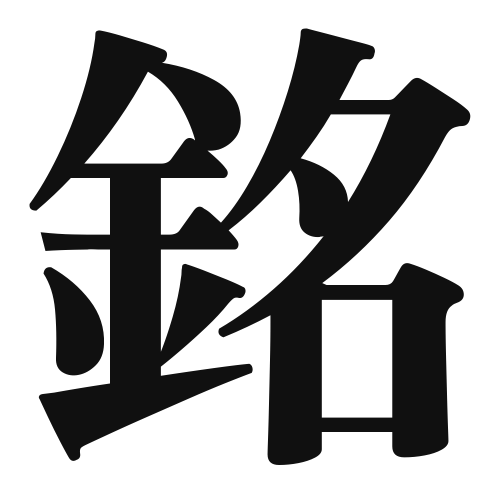1. Overview of Meaning
The kanji “銘” (mei) generally means “inscription” or “engraving.” It refers to a mark or a name that is carved or written on an object, often to indicate its origin, ownership, or significance.
2. Formation and Radical
The kanji “銘” is a compound character (会意文字) that combines the elements of “金” (kin), meaning “metal,” and “名” (mei), meaning “name.” This suggests the idea of a name or inscription made on a metal object.
The radical of “銘” is “金” (kin), which is associated with metal and is commonly found in kanji related to metal objects.
3. Examples of Usage
Common words and phrases that include “銘” are:
- 銘板 (めいばん, meiban) – nameplate
- 銘文 (めいぶん, meibun) – inscription
Example sentence in daily conversation:
この銘板には、製造者の名前が刻まれています。
(This nameplate is engraved with the manufacturer’s name.)
4. Synonyms and Antonyms
Similar kanji with related meanings include:
- 名 (めい, mei) – name, which refers more generally to a person’s or object’s name without the connotation of being inscribed.
Antonyms include:
- 無名 (むめい, mumei) – nameless, which indicates the absence of a name or inscription.
5. Cultural and Historical Background
The kanji “銘” has significant ties to Japanese culture, particularly in the context of craftsmanship and artistry. In traditional Japanese practices, artisans often inscribe their names on their works to signify authenticity and pride in their craftsmanship.
Proverbs and idiomatic expressions related to “銘” include:
- 「名は体を表す」 (なはたいをあらわす, na wa tai o arawasu) – “A name represents the body,” meaning that a name reflects the essence or quality of the person or object.
